Technological tradition: introducing Aston Martin’s new DB11

Making something feel innately familiar while also breathtakingly new is a clever trick. Given time, skill and sophisticated design language, it’s possible to build on the past without having to look back. That approach is effectively demonstrated in Aston Martin’s new DB11, a car tasked with both continuing a long-running dynasty and setting a new technological and performance benchmark with which to take the company forward after a long period of relative inactivity. The DB line can be traced all the way back to David Brown’s DB2 of 1950, moving up through the DB2/4, DB4, DB5, DB6, then after a long hiatus, the DB7, DB9 and now DB11 (DB10 being assigned to a client called Sam Mendes for a certain film project in 2015).
The DB11 is sufficiently different to mark a sharp break from Aston’s recent past. It shares the same basic proportions as its forebears, chiefly because AM is so well versed in the mathematical dissection of beauty – the vivaciousness of a curve, the seduction of a surface and the innate rightness of the golden section. Yet apart from that, everything – bar a switch or two – is entirely new. The DB11 is the first physical manifestation of Aston Martin's new generation, the synthesis of essential proportions with new, more angular and expressive forms, rather than just the flowing curves of old.
There’s no place for hard or soft options in this fiercely contested market sector, where your choice of car is bolstered as much by your buy-in to the brand and the image you’d like to project. Aston owners see themselves as a singular breed, and the company has evolved to cater for every taste, while simultaneously holding a steady tiller for a timeless evocation of the best of British design and technology. So you can spec your DB11 through AM’s bespoke ‘Q’ Division, or chose between five special launch editions, each of which has been put together by Marek Reichman’s design department to emphasise different aspects of the car.
The mix of tradition and technology is a balancing act that few others achieve. Yet as well as being light years ahead of its predecessors in terms of interior technology, ergonomics and general sophistication, the DB11 delivers innovation without sacrificing the tactile delights of leather and Alcantara, the feel of hand-machined metal and the overall ambience of tailor-made perfection.
Get behind that wheel and you’re rewarded with excellent visibility, the glorious – but not overly intrusive – sound of that 5.2l V12 and steering that helps hustle this sizeable car along with confidence and poise. Having driven practically every Aston in the modern era, there’s a comforting familiarity but also a more sophisticated, less bruising approach to power delivery. Like all the best GTs, the DB11 can flick between all-out sports car to smooth-riding cruiser depending on your mood and the surroundings and the much-improved tech runs to an all-new entertainment system and gadgets like self-parking. This is classic elegance without compromise.
Over time, a Volante droptop will be launched, as will other variants. But just like the DB9 before it, there’s much to cherish in the simple purity of the DB11 as it is at launch. A noble lineage continues, and the DB badge will take Aston far into the future.
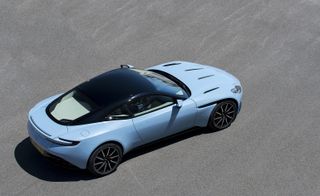
The DB line can be traced all the way back to David Brown’s DB2 of 1950, moving up through the DB2/4, DB4, DB5, DB6, then after a long hiatus, the DB7, DB9 and now the DB11

Like all the best GTs, the DB11 can flick between all-out sports car to smooth-riding cruiser
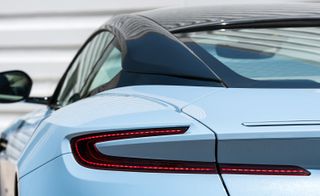
The DB11 is the first physical manifestation of Aston Martin's new generation, making something innately familiar feel breathtakingly new

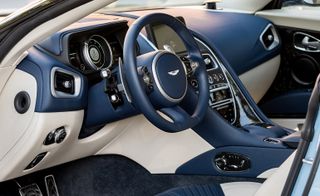
As well as being light years ahead of its predecessors in terms of interior technology, ergonomics and general sophistication, the DB11 delivers innovation without sacrificing the tactile delights of leather and Alcantara, the feel of hand-machined metal and the overall ambience of tailor-made perfection

In partnership with leading sound technology company Bang & Olufsen, the DB11 provides a uniquely tailored audio experience
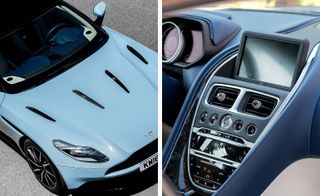
The mix of tradition and technology is a balancing act that can be witnessed both in the exterior and interiors
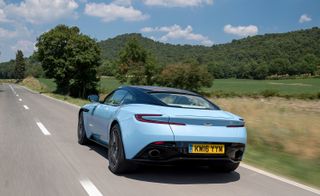
Just like the DB9 before it, there’s much to cherish in the simple purity of the DB11. A noble lineage continues, and the DB badge will take Aston far into the future
INFORMATION
Aston Martin DB11, from £154,900. For more information visit Aston Martin's website
Photography courtesy Max Earey
Wallpaper* Newsletter
Receive our daily digest of inspiration, escapism and design stories from around the world direct to your inbox
Jonathan Bell has written for Wallpaper* magazine since 1999, covering everything from architecture and transport design to books, tech and graphic design. He is now the magazine’s Transport and Technology Editor. Jonathan has written and edited 15 books, including Concept Car Design, 21st Century House, and The New Modern House. He is also the host of Wallpaper’s first podcast.
-
 Olympic Torch Relay Cauldron by Mathieu Lehanneur: 'the object which unites our energies'
Olympic Torch Relay Cauldron by Mathieu Lehanneur: 'the object which unites our energies'Mathieu Lehanneur unveiled his design for the Olympic Torch Relay Cauldron for Paris 2024 as the Torch Relay prepares to make its debut in Marseille on 8 May
By Rosa Bertoli Published
-
 Alternate worlds and end of days: Pierre Huyghe in Venice
Alternate worlds and end of days: Pierre Huyghe in VenicePierre Huyghe delves into dystopia with 'Liminal', at Palazzo Grassi’s Punta della Dogana in Venice
By Amah-Rose Abrams Published
-
 Designer Holly Waterfield creates luxurious pied-à-terre in Renzo Piano Manhattan high-rise
Designer Holly Waterfield creates luxurious pied-à-terre in Renzo Piano Manhattan high-riseA private residence by Holly Waterfield Design Studio in Renzo Piano's skyscraper 565 Broome Soho blends a sense of calm and cosiness with stunning city views
By Léa Teuscher Published
-
 Aston Martin DBX707 SUV is updated with a new interior and infotainment
Aston Martin DBX707 SUV is updated with a new interior and infotainmentThe new Aston Martin DBX707 has better tech, better design but the same raw power, keeping its spot at the top of the ultra-SUV tree
By Jonathan Bell Published
-
 New Aston Martin Ginza showroom brings customer personalisation to life
New Aston Martin Ginza showroom brings customer personalisation to lifeAston Martin Ginza showroom is a two-storey space in The Peninsula Tokyo hotel and a new hub for the car maker
By Jonathan Bell Published
-
 Aston Martin Vantage is reshaped and revitalised for a new generation
Aston Martin Vantage is reshaped and revitalised for a new generationThe Aston Martin Vantage is a sports car with an authentic racing heritage, now upgraded and enhanced with new styling and fresh interiors
By Jonathan Bell Published
-
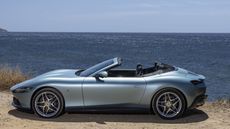 Year in review: the top 10 cars of 2023, as selected by Wallpaper’s Jonathan Bell
Year in review: the top 10 cars of 2023, as selected by Wallpaper’s Jonathan BellWhat were the best four-wheeled offerings of 2023? Transport editor Jonathan Bell takes us through the year’s most intriguing automobiles
By Jonathan Bell Published
-
 The J.Laverack Aston Martin .1R bicycle is a pedal-powered, two-wheeled hypercar
The J.Laverack Aston Martin .1R bicycle is a pedal-powered, two-wheeled hypercarAston Martin and J.Laverack reveal their exquisitely crafted road bike
By Jonathan Bell Published
-
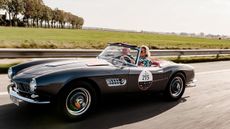 Zoute Grand Prix is a car fest like no other at a pristine Belgian beachside town
Zoute Grand Prix is a car fest like no other at a pristine Belgian beachside townAmy Serafin takes to the well-heeled streets of Knokke-Heist to experience the Zoute Grand Prix, its annual cavalcade of classic car-related events, from a rally to an auction
By Amy Serafin Published
-
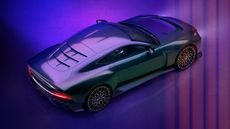 Aston Martin Valour celebrates 110 years of the British sports car manufacturer
Aston Martin Valour celebrates 110 years of the British sports car manufacturerUnashamedly macho, the limited-edition Aston Martin Valour is a birthday gift for moneyed enthusiasts of old-school driving sensations
By Jonathan Bell Published
-
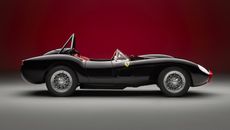 The Little Car Company’s garage of pocket exotics are small, speedy and beautiful
The Little Car Company’s garage of pocket exotics are small, speedy and beautifulThe Little Car Company specialises in bespoke ‘junior classics’, exacting, scaled-down reinterpretations of iconic (and expensive) automobiles injected with electric driving delight
By Jonathan Bell Published